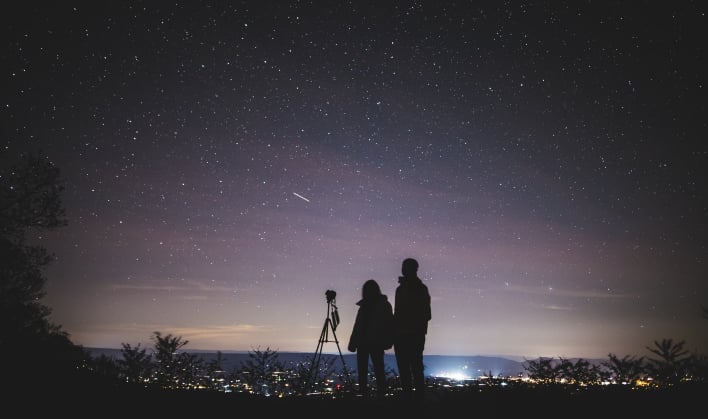Two Meteor Shower Spectacles Will Light Up The Night This Weekend, Where To Watch

Summer is a great time to stay up late and try to catch a glimpse of a shooting star. Currently star gazers have three separate meteor showers which could send a streak of light across the night sky. The Delta Aquariids, Alpha Capricornids, and the Perseids meteor showers are all expected to be active through mid-to-late August.
The Delta Aquariids is a strong meteor shower that is best seen from the southern tropics. If you are located above the equator where the radiant is located lower in the southern sky, your chances of seeing any activity from this particular shower will be limited. While the peak of the Aquariids shower was last night, with the moon being 1% full, you might still be able to catch a few faint meteors from Aquariids throughout most of the month of August.

The second active meteor shower is the Alpha Capricornids. It is expected to remain active until mid-August, with the peak being Saturday night and into Sunday morning. This meteor shower is not particularly strong, with an average of around five meteors per hour. However, unlike the fainter Aquariids, the fireballs should be easier to spot as they race across the darkened sky. Residents on both sides of the equator should be able to view this meteor shower equally well.
If you happen to miss tonight's show, you will have another opportunity later in August with the Perseids shower. Typically, this shower provides a good number of opportunities to wish upon a falling star, with those in rural locations ranging from 50-75 shower members per hour. The Perseids are particles that come from comet 109P/Swift-Tuttle during its returns to the inner solar system. The name is derived from the area of the sky where the meteors seem to originate, which is located near the constellation of Perseus the Hero when at maximum activity. Perseids is expected to peak August 11-12.
Anytime you are wanting to view one of these meteor showers, it is best to get away from the pollution of city lights if possible. The remainder of 2022 should provide ample opportunities to see a falling star or two, so be sure to keep checking back here at HotHardware for any future updates.
Top Image Credit: Yuting Gao from Pexels

